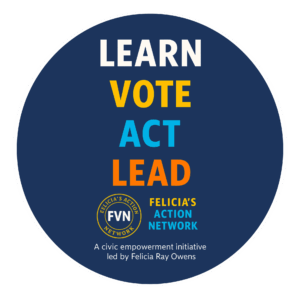
Roman Rosdolsky Breathed New Life Into Marx’s Capital
March 31, 2025
A Marxist Account of the Medieval Mediterranean
March 31, 2025President Donald Trump has spent the early months of his return to the White House dismantling the nation’s diversity, equity, and inclusion efforts. The moves, he’s said, are designed to forge a “color-blind” society that rejects the kinds of race-conscious programs intended to make amends for the historical wrongs experienced by Black Americans and other marginalized groups.
The results of his administration’s assault on diversity has been tumultuous. He has signed executive orders seeking to sanitize the country’s history of race, dismantle the U.S. Department of Education, and gut the federal government’s DEI programs. This latter action has resulted in mass firings that threaten to upend the federal service’s long-cherished status as a lifeline for Black families hoping to reach the middle class.
In January, Trump turned a tragedy into a moment to broadcast his grievances about DEI. The day after a mid-air collision between an American Airlines plane and a U.S. Army Black Hawk helicopter in Washington, D.C. killed 67 people, the president, citing no evidence, pointed the finger at DEI efforts at the Federal Aviation Administration.
His comments came after he had removed all the members of the Aviation Security Advisory Committee. It also came just weeks before the administration began firing hundreds of Federal Aviation Administration employees, raising concerns among air safety experts about the future of air travel.
As the country prepares for the ripple effects of the new administration’s policies, here’s an overview of some of Trump’s more high-profile orders — which encompass everything from transgender equality to climate change — and their potential impact on Black communities.
This story will be updated.
What’s in store for Black history?
The order: Trump signed an order accusing the Smithsonian Institution of having “come under the influence of a divisive, race-centered ideology.” The order said the Smithsonian has “promoted narratives that portray American and Western values as inherently harmful and oppressive.”
The implications: Political leaders and historians have warned that the order threatens to sanitize U.S. history.
“We do not run from or erase our history simply because we don’t like it,” U.S. Rep. Yvette Clarke of New York said in a statement. “We embrace the history of our country — the good, the bad, and the ugly.”
Clarissa Myrick-Harris, a professor at Morehouse College, shared similar sentiments, telling the Associated Press that “it seems like we’re headed in the direction where there’s even an attempt to deny that the institution of slavery even existed, or that Jim Crow laws and segregation and racial violence against Black communities, Black families, Black individuals even occurred.”
What happens next? According to the order, Trump wants to “restore truth and sanity to American history.” He has empowered Vice President JD Vance to review all Smithsonian programs and centers, and remove what he calls “improper ideology from such properties.”
Trump also has tasked U.S. Secretary of the Interior Doug Burgum with determining if monuments “have been removed or changed to perpetuate a false reconstruction of American history” since January 2020. Trump is a defender of Confederate statues, many of which were removed following the murder of George Floyd in 2020.
What steps is Trump taking against education?
The order: Trump signed an order calling for the closure of the Department of Education so that children and their families can, as the order puts it, “escape a system that is failing them.”
The implications: The order is essentially pushing for the department to be stripped of its most critical functions, including managing a $1.7 trillion portfolio of student loans and providing services for students with disabilities.
This chaos has been a cause for concern for Black student loan borrowers, who owe a disproportionate amount of the national student loan debt and struggle more than their white counterparts to pay back their loans.
“A lot of what Trump is doing is regressive,” Ivory Toldson, a Howard University professor who previously served as the director of education for the NAACP, recently told Capital B. “It’s not consistent with what students or schools need.”
What happens next? It’s uncertain how Trump would shutter the department, given that closing the federal agency, which was created in 1979, requires an act of Congress. Legislation to close the department isn’t likely to get the votes needed to advance.
Still, according to legal scholars, Trump can deeply restructure the department — turning it into a shell of its former self.
What is the fate of DEI programs?
The orders: Trump signed an order dismantling federal agencies’ DEI programs, impugning these initiatives as “wasteful,” “immoral,” and “shameful.” He signed another order revoking Executive Order 11246, which was signed by President Lyndon B. Johnson in 1965 to prohibit discriminatory hiring and employment practices for government contractors.
The implications: Trump is gutting one of the main mechanisms that his predecessor used to encourage racial diversity in the federal government.
One of former President Joe Biden’s chief goals when he entered office was to encourage diversity across the federal workforce. To that end, he signed a wide-ranging order in 2021 — the year after George Floyd’s murder sparked racial justice protests across the country — directing agencies to draw up plans for prioritizing diversity in hiring and retention.
A deadline was set for 5 p.m. on Jan. 22 for the heads of agencies to inform affected employees that they’ll be put on paid administrative leave. All DEI-related offices and programs will end, and all websites and social media accounts for these offices will be shut down.
The memo also asked federal agencies to submit a written plan by Jan. 31 for dismissing these employees.
What happens next? Trump’s opponents are mobilizing to challenge his efforts. The ACLU, for instance, announced in a new report that it will work with organizations to “explore and document the harmful impact of current anti-DEI laws” at the federal level.
It will also push congressional caucuses and committees to document the social and economic effects of anti-DEI maneuvering on everyday Americans and state and local governments and prod state governors and mayors to “create and expand” DEI initiatives.
What attacks are we seeing on transgender equality?
The orders: Trump signed orders seeking to ban transgender troops from openly serving in the military and restrict gender-affirming care for youth.
The implications: Trump’s actions immediately sparked fear among transgender Americans, who worry about the hostile climate that the administration is creating.
“I don’t think a lot of people know what kind of gift that is to just look at yourself in the mirror and feel content,” 29-year-old May Anderson told the Washington Post. “You don’t have to love how you look. You don’t have to feel like, ‘I’m the sexiest woman alive.’ You just have to look at yourself in the mirror and feel content. I was never able to do that before. Transition fixed that.”
The stakes are especially high for Black transgender and nonbinary youth, 21% of whom have attempted suicide in the past year and almost half of whom don’t feel safe at school, according to reports released by The Trevor Project and the Human Rights Campaign in 2024.
What happens next? Civil rights groups have filed a lawsuit challenging the military ban as unconstitutional.
What is happening with the World Health Organization?
The order: Trump signed an order to withdraw the U.S. from the World Health Organization, accusing the agency of “mishandling of the COVID-19 pandemic that arose out of Wuhan, China,” which he cited as one of the central reasons for his decision.
The order instructs the U.S. Secretary of State and the director of the Office of Management and Budget to “take appropriate measures” to “pause the future transfer of any United States Government funds, support, or resources to the WHO.”
The implications: The WHO is a specialized U.N. agency and broadly functions as a coordinating authority on global health issues, helping countries to respond to infectious disease outbreaks and other public health crises, such as the COVID-19 pandemic.
The Trump administration was slow to respond to COVID-19, which killed Black Americans at more than twice the rate of white Americans. Among other things, the administration ignored the pandemic playbook created by former President Barack Obama’s team and terminated roles intended to help the federal government to contain the spread of the virus.
Historically, the U.S. has been one of the largest financial supporters of the WHO, with annual contributions ranging from $163 million to $816 million over the last decade, according to KFF, a health policy think tank.
The agency isn’t without its critics, who say that it’s slow, toothless, and often hamstrung by partisan politics. Still, experts worry that U.S. withdrawal from the WHO will impede the country’s ability to prepare for the next pandemic.
Lawrence Gostin, a professor of public health law at Georgetown University, explained on X that U.S. withdrawal from the agency will endanger Americans, especially vulnerable Americans.
The country’s health agencies and pharmaceutical companies use WHO data to develop vaccines and other medications, and departure means losing access to this data.
“He’s unraveling US engagement & funding now,” Gostin wrote in one post. In another, he added that Trump could “slash global health funding” for “HIV, sexual health, polio eradication & health emergencies” and could be “sowing the seeds for the next pandemic.”
What happens next? The U.S. is required to give one year’s notice that it intends to withdraw, according to a joint congressional resolution it signed. During that fiscal year, the U.S. must meet its financial obligations to the agency.
What might this administration mean for Haitian communities?
The orders: Trump signed an order pausing the U.S. Refugee Admissions Program, which permits certain refugees fleeing violence and persecution to legally come to the U.S. after they undergo various security and medical screenings. Trump name-checked Springfield, Ohio, in the order. The small city was upended by bomb threats after Trump on the campaign trail peddled the baseless claim that Haitian residents were eating pets.
He also signed an order terminating “all categorical parole programs that are contrary to the policies of the United States established in my Executive Orders.” This includes programs for refugees and asylum seekers fleeing Haiti, Cuba, Nicaragua, and Venezuela.
The programs allow an individual who may be inadmissible or otherwise ineligible for admission into the U.S. to enter the country for a temporary period. An individual who’s paroled into the U.S. hasn’t been formally admitted into the country for the purposes of immigration law.
Trump signed an additional order banning birthright citizenship, a right enshrined in the 14th Amendment that recognizes anyone born here as a citizen, regardless of their parents’ status.
Another order Trump signed suspends asylum, a right established in U.S. and international law that allows people who have been persecuted or would face persecution in their home country conditionally stay in the U.S. The order hampers the ability to pursue asylum at the border, leaving migrants who fear for their lives almost no path toward safety in the U.S.
The implications: Many Haitians are in the U.S. to escape violence or environmental disasters, and fear what might be in store for them under a second Trump administration.
The president’s order regarding refugee admissions instructs officials to review whether “further entry into the United States of refugees” is in alignment with “the interests” of the country.
Given Trump’s accusations, Haitians are concerned about how else the president might target their communities.
The Census Bureau Current Population Survey shows that, as of February 2024, there were 852,000 Haitian migrants in the country and that 689,000 U.S.-born Americans have at least one parent who was born in Haiti.
What happens next? Two dozen states and cities, as well as four attorneys general, have sued Trump over the order revoking birthright citizenship, arguing that it violates the U.S. Constitution.
One of those officials, Illinois Attorney General Kwame Raoul, said on Monday, “I, myself, am a child of immigrants from Haiti. So, I’m a birthright baby.”
A federal judge on Thursday issued a two-week restraining order on what he called Trump’s “blatantly unconstitutional” birthright citizenship order, at least temporarily blocking it.
What is the future of capital punishment?
The order: Trump signed an order directing the attorney general to “take all necessary and lawful action to ensure that each state that allows capital punishment” has the drugs needed to conduct executions via lethal injection.
Describing his motivations, Trump referred to capital punishment as “an essential tool for deterring and punishing those who would commit the most heinous crimes and acts of lethal violence against American citizens.”
The implications: In the order, Trump urges the attorney general to “pursue the death penalty for all crimes of a severity demanding its use,” and specifically for cases that involve the murder of a law enforcement officer and capital crimes committed by migrants lacking legal status.”
Civil rights organizations have long called on federal and state governments to abolish capital punishment — not encourage it — highlighting the ongoing racial disparities in sentencing in the U.S.
“Racism is inextricably linked to capital punishment,” as the NAACP Legal Defense and Educational Fund puts it. “The death penalty has its roots in slavery, lynchings, white vigilantism, and the racial inequities in sentencing persist to this day.”
In a statement condemning Trump’s many orders, including his pursuit of the death penalty, Janai Nelson, the president of the LDF, nodded to this disparity and the potential dangers to Black communities, saying that the orders “represent a sweeping assault on our democratic ideals,” as well as an effort to chip away at “decades of progress.”
What happens next? Trump’s pick for attorney general, Pam Bondi, is expected to receive Senate confirmation and follow through on his directions.
What is the status of the TikTok ban?
The order: Trump signed an order pausing for at least 75 days the enforcement of a law that would ban TikTok in the U.S. unless its China-based parent company sells to a U.S. approved buyer, citing concerns about national security and the use of private data. This order could allow Trump to take credit for “saving” a popular social media app that he was enthusiastic about banning during his first term.
The implications: Content creators are in limbo. For many Black content creators, the enforcement of the TikTok ban would be devastating. That’s because it isn’t just an app — it’s a means of survival for some of these creators, who’ve been able to quit their full-time jobs, pay bills, and monetize partnerships with large brands.
Takeisha Lafaye, a Mississippi Delta native, told Capital B that she can “make a couple videos, lay down, do all this different stuff,” and that she can pay all of her bills because of the platform she’s established on TikTok.
She’s also taken on the responsibility of helping her family: “I get to help my family. I take my family to doctor’s appointments, and I have so much time to move around. I’m gonna be sad because it’s gonna be a real inconvenience,” she said.
Eight content creators filed a lawsuit to reverse the ban, arguing that it jeopardizes their personal income and creative expression. The U.S. Supreme Court earlier this month upheld the ban, saying that it doesn’t violate the petitioners’ First Amendment rights.
Christopher Townsend, one of the eight content creators who sued the government, said that he was thankful for Trump’s order.
Still, the order only muddies the legal landscape, according to legal experts. The law is technically in effect, since Trump doesn’t have the authority to suspend it. “Companies that are violating the law are still violating the law,” Alan Rozenshtein, a professor at the University of Minnesota Law School, told CNN. “Trump could turn around and change his mind.”
What happens next? The day after Trump signed the order, congressional leaders introduced the Repeal the TikTok Ban Act, a bipartisan bill that would undo previous legislation signed by Biden.
What can we expect on the climate and environment front?
The orders: Trump signed an order triggering the start of the country’s withdrawal from the Paris climate agreement, drawn up to combat global warming.
He signed another order vowing to eliminate what he erroneously refers to as the “electric vehicle mandate,” Biden’s nonbinding goal to have electric vehicles, known as EVs, make up half of new cars sold by 2030 to prod Americans and companies to shift away from gas-heavy vehicles.
A third order seeks to eliminate environmental justice efforts, and a fourth doubles down on his promise to “drill, baby, drill” by declaring a “national energy emergency.”
Still another calls for a sweeping review of the Federal Emergency Management Agency, which is charged with helping Americans to recover from disasters, and he has floated the idea of closing the agency altogether.
The implications: These orders arrived as Black neighborhoods in parts of California attempt to recover from wildfires fueled by climate change. Actions that might accelerate climate change would have a disproportionate effect on Black Americans, who are among the groups most significantly affected by climate change.
Trump has vowed to declare a “national energy emergency,” despite the fact that the U.S. is currently producing more oil than any other country. Scientists recently warned that, due largely to oil and gas production, the pace of global warming has intensified.
Last year was the hottest year on record, and Black Americans are “40% more likely than non-Black Americans and non-African Americans to currently live in areas with the highest projected increases in mortality rates due to climate-driven changes in extreme temperatures,” according to a 2021 Environmental Protection Agency report.
Additionally, the move to revamp FEMA and shift more disaster response costs to states could leave under-resourced communities, particularly Black and low-income communities, even more exposed to climate disasters, critics warn.
In the meantime, Black Americans remain exposed to 21% more pollution than the overall population average, despite generating 23% less pollution than average. This is partly because Black neighborhoods are often located close to highways and factories.
“How transportation policy has been meted out over the last century is that we’re left at the intersection of major highways and major roads,” Sheryl E. Ponds, who’s the founder of Dai Technologies, one of the first Black woman-run EV adoption corporations, told Capital B last year. “We end up with a lot of soot and dust and carbon emissions on our window sills in our home, and school and work absences because of asthma.”
What happens next? The order says that U.S. withdrawal from the Paris climate agreement will be “effective immediately upon this provision of notification,” but that process takes a year — if not longer. It took close to four years for the U.S. to fully pull out of the agreement when Trump took a similar action during his first term.
Growing debates over FEMA’s future and climate spending priorities come as the country faces stronger hurricanes, wildfires, and floods. And with more extreme weather looming, Black Americans are still fighting to recover from the last round of disasters.
Great Job Brandon Tensley & the Team @ Capital B News Source link for sharing this story.







